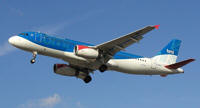|
Aircraft Control Systems |
|
Large modern aeroplanes are
controlled by computer systems,
replacing the old cables and mechanical systems.
This saves a lot of weight and improves
safety, as most systems have four
independent backup channels.
|
 |
|
Input :
- A large number of sensors located around the aircraft supply
readings to the computer.
- Readings from the pilot's controls.
|
|
|
Processing :
- A control program analyses the readings from the sensors, and
calculates any adjustments that need to be made.
- The program prevents pilots from handling the aircraft
dangerously by sticking to preset limits. The pilot can sometimes
override the system in emergencies.
|
|
|
Output :
- Output signals are sent to actuators
that operate parts of the aircraft such as flaps, undercarriage,
rudder, air-brakes.
|
|
|
Aircraft can land automatically by using
Instrument Landing Systems - ground-based signals that guide
an aircraft on to the runway, even in poor weather conditions.
Signals are received and fed to the on-board computer which makes
flight adjustments if needed.
|
 |
| |
| |